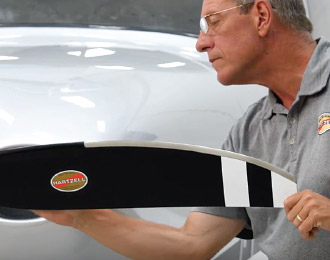
There has been a lot of discussion about the importance of the preflight inspection in general aviation, and with good reason. When performed properly, preflight inspections can save lives by revealing dangerous problems that may be lurking out of sight.
But all too often, pilots fall victim to complacency and rush through the preflight to “kick the tires and light the fires.” A visual inspection is often not enough to tell you if an airplane is ready to fly. You have to get hands-on during preflight to spot hidden trouble, and a good place to start is with the “tap test.”
For example, when inspecting the aircraft propeller, give the spinner a gentle knock with the back of your hand and listen closely for the sound of any loose items, such as a detached screw, that move in response. You can also tap on the surface of the wings to detect any loose or detached parts. If you hear anything abnormal, have it addressed by a maintenance technician before flying.
If you have a composite propeller, you can inspect the blades for delaminations and debonds by gently tapping the surface with a metal coin. You will hear an audible change – a dull, hollow sound – when you encounter a dead area in the bonding. Hartzell Propeller has a helpful tutorial video on using this technique to check for damage in composite propellers.
As the final authority regarding an aircraft’s airworthiness, it’s up to the pilot in command to determine if something isn’t right prior to a flight. Take your time during the preflight and don’t be afraid to get your hands a little greasy in the process. Approach the preflight process as if your life depends on it – because it does!